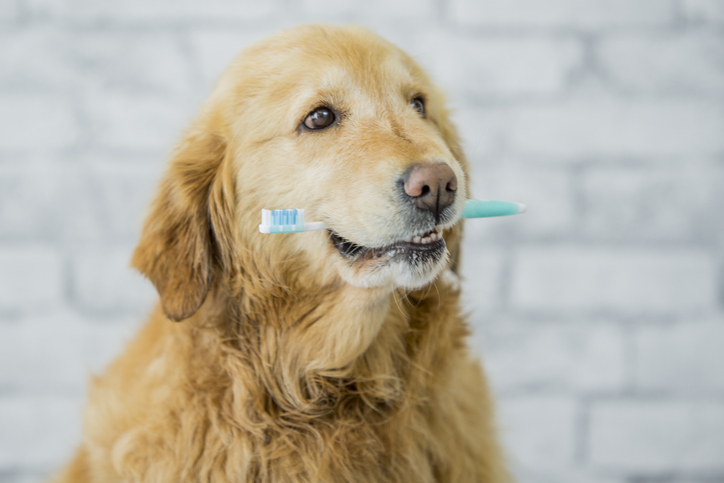How to Brush Your Dog’s Teeth



You encourage your pets to be active and make sure they eat well, but do you pay much attention to their pearly whites? If not, you may be putting their health at risk. “Periodontal disease is the most common thing that we diagnose in dogs and cats,” says Carlos A. Rice, D.V.M., founder of Veterinary Dentistry Specialists in Mount Laurel, New Jersey. And left untreated, an unhealthy mouth can lead to inflammation, gum recession, and bone loss—all of which result in pain and poor quality of life.
Brush up at home
You should be cleaning your animal’s teeth twice a week with a soft brush and pet toothpaste. Django Martel, D.V.M., a board certified veterinary dentist at NYC’s Animal Medical Center, suggests brushing with the animal’s mouth closed: Gently hold your pet’s snout and insert the brush between the lips to brush top and bottom teeth along the gum lines. If you’re a dog owner, know this: Smaller pups have more crowding in their mouth and are often genetically predisposed to periodontal disease, so diligence is even more important. Dental chews are a great way to get rid of tartar—especially in cats, who have smaller mouths. These taste like a treat and wipe gunk away as they are eaten. Another smart move is to steer clear of certain toys. “We see so many broken teeth from chewing on bones,” says Martel. Tennis balls, with their scratchy exterior, act like sandpaper against teeth, wearing them down over time. Need an alternative? “Any rubber or silicone-based toys that bend are wonderful,” says Rice.
Get pro help
“Annually, pets should have a proper oral examination done by their vet,” advises Rice. Unlike humans, who can use logic to grin and bear being poked by a dentist, animals won’t sit still. General anesthesia will be used to safely clean all the areas in need. “We do full mouth X-rays, dental charting, ultrasonic scaling and polishing,” adds Martel. Plus, routine cleanings allow your vet to check for other diseases, like oral cancer.
Keep an eye out
Even if you’re doing all of the above, a dental problem can arise, and knowing what to look for could save your pet. The most common sign of an issue is smelly breath (worse than normal). Red or bloody gums, extreme drooling or sensitivity when you try to touch the mouth area are other clues. Since cats use their mouths for grooming, an unkempt kitty may be a sign something is up. If you notice any of these things, it’s time to make a vet appointment.
© Meredith Operations Corporation. All rights reserved. Used with permission.

















